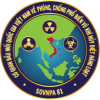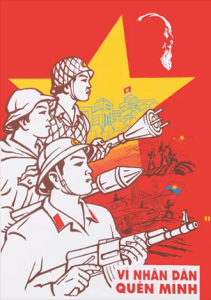International Mechanisms for Biological Weapons Control
In the current context of global security facing increasingly non-traditional challenges, from international terrorism to threats posed by advanced biotechnology, preventing the proliferation of biological weapons has become one of the top priorities for the international community. Notably, the recent COVID-19 pandemic has highlighted the potential dangers of biological agents, which can cause severe consequences for public health and social stability. Currently, the international community has established three key mechanisms to control biological weapons: the Biological Weapons Convention (BWC); United Nations Security Council Resolution 1540 (UNSCR 1540); and the United Nations Secretary-General’s Mechanism for Investigation of Alleged Use of Chemical and Biological Weapons (UNSGM). The coordination of these three mechanisms forms a multi-layered, multi-dimensional defense system in the fight against the threat of biological weapons.
- Overview of Biological Weapons Control Mechanisms
The Biological Weapons Convention (BWC): The Global Legal Framework
The BWC was signed in 1972 and entered into force in 1975, becoming the first international treaty to completely prohibit the development, production, stockpiling, and use of biological weapons. As of 2023, the convention has 183 member states—a testament to the global consensus on eliminating biological weapons.
Advantages of the BWC:
– Establishes a global legal norm prohibiting biological weapons.
– Provides a platform for international cooperation in biology for peaceful purposes.
– Creates a formal forum for member states to discuss, share experiences, and build trust.
Limitations of the BWC:
– Lacks a mandatory inspection mechanism: Unlike the Chemical Weapons Convention (CWC), the BWC does not have a dedicated inspection body like the OPCW.
– Non-mandatory and non-transparent reporting: The Confidence-Building Measures (CBMs) rely on voluntary participation, leading to inconsistencies and a lack of trust.
– Challenges in addressing violations: The convention lacks an effective enforcement mechanism to handle violations.
Resolution 1540 (2004): A Mechanism to Prevent Biological Weapons Proliferation to Non-State Actors
Adopted after the 9/11 terrorist attacks, Resolution 1540 targets not only states but also non-state actors such as terrorist organizations—a new approach to biological weapons control. The resolution requires all member states to enact domestic laws prohibiting non-state actors from accessing weapons of mass destruction; implement border controls, export controls, and biosecurity measures in research facilities; and establish the 1540 Committee to monitor compliance.
Advantages:
– Legally binding under Chapter VII of the UN Charter.
– Focuses on non-state actors—a significant threat in the age of terrorism and advanced biotechnology.
– Provides technical and financial support to countries with limited enforcement capabilities.
Challenges:
– Limited enforcement capacity in many developing countries, particularly in terms of personnel, technology, and legal frameworks.
– Reports are often superficial, lacking depth and failing to reflect genuine control efforts.
– Insufficient long-term funding and resources for countries in need.
The UN Secretary-General’s Mechanism (UNSGM)
Established in 1982, this mechanism allows the UN Secretary-General to dispatch independent expert teams to investigate allegations of biological weapons use, particularly in contexts where the BWC lacks an inspection framework.
Advantages:
– High objectivity and independence: Expert teams typically consist of international scientists free from political influence.
– Enables rapid response to investigation requests.
– Provides reliable scientific evidence for the international community.
Limitations:
– Relies on the cooperation of the accused state—if access is denied, the investigation is effectively nullified.
– Vulnerable to politicization or denial of results by major powers.
– Lacks enforcement authority or the ability to propose sanctions after concluding an investigation.
- Key Achievements and Challenges of the Mechanisms
Notable achievements in biological weapons non-proliferation efforts:
– The BWC has maintained global consensus on banning biological weapons and enhanced scientific cooperation and technology transfer for peaceful purposes. In 2022, the 9th Review Conference adopted the establishment of a working group to propose measures to strengthen the BWC’s implementation, including improving transparency through periodic reporting.
– Resolution 1540: Over 95% of countries have submitted implementation reports, and information-sharing mechanisms between states and international organizations have been strengthened, preventing illicit trafficking of biological materials. The 1540 Committee has assisted nearly 60 countries in developing domestic laws and regulations, and the UN Security Council recently extended the committee’s mandate.
– The UNSGM: To date, the UNSGM has conducted three investigations—Mozambique (1992), Azerbaijan (1992), and Syria (2013)—regarding chemical weapons. While no biological weapons investigations have been conducted, the UNSGM has organized field exercises and training programs to enhance expert capabilities. Coordination between the UNSGM and the WHO has also improved in biological crisis scenarios.
Gaps and challenges:
– Lack of an independent and effective monitoring mechanism: This is the BWC’s most significant weakness, making it difficult to detect and prevent violations.
– Dependence on political will: All three mechanisms require state cooperation; if major powers do not engage seriously, effectiveness is diminished.
– Biotechnology competition: Advances in technologies like CRISPR and synthetic biology are outpacing the control capabilities of existing legal frameworks.
- Solutions to Strengthen Biological Weapons Control
For the BWC
– Introduce a mandatory inspection protocol: This is crucial to reinforcing legal bindingness.
– Standardize CBM reporting and require annual submissions from member states.
– Enhance scientific cooperation for peaceful purposes and establish an early warning and rapid response network for biological threats.
For Resolution 1540
– Provide targeted technical and legal support: Increase funding for programs assisting developing countries in law-building, expert training, and border control.
– Improve reporting transparency and enforceability: Establish an independent review mechanism for national reports to enhance quality.
– Strengthen regional and cross-sectoral cooperation, particularly among security, health, and scientific organizations.
For the UNSGM
– Reinforce the independence and transparency of investigation teams by setting common standards, stable funding, and objective evaluation processes.
– Develop mechanisms to protect witnesses and biological data, preventing leaks or manipulation.
– Enhance cooperation with regional organizations like ASEAN and the EU to improve on-the-ground access and information-sharing.
Additional Proposals
– Establish a dedicated biological weapons organization similar to the OPCW for chemical weapons—this would enhance global monitoring, investigation, and technical support.
– Leverage new technologies like AI, big data, and genetic analysis for early threat detection.
– Strengthen the role of civil society, NGOs, and research institutions in policy advisory and early warning for governments.
In a world increasingly threatened by armed conflicts and bioterrorism, controlling biological weapons is more urgent than ever. Current mechanisms like the BWC, Resolution 1540, and the UNSGM have played vital roles in establishing legal frameworks and early warning systems. However, to be truly effective, these mechanisms require structural, functional, and enforcement improvements. This demands long-term, constructive commitment from the international community, particularly scientific and technological powers. Only then can the world build a robust and effective global biosecurity system, protecting humanity from the invisible yet perilous threat of biological weapons.
Vuong Nguyen (TT81)






